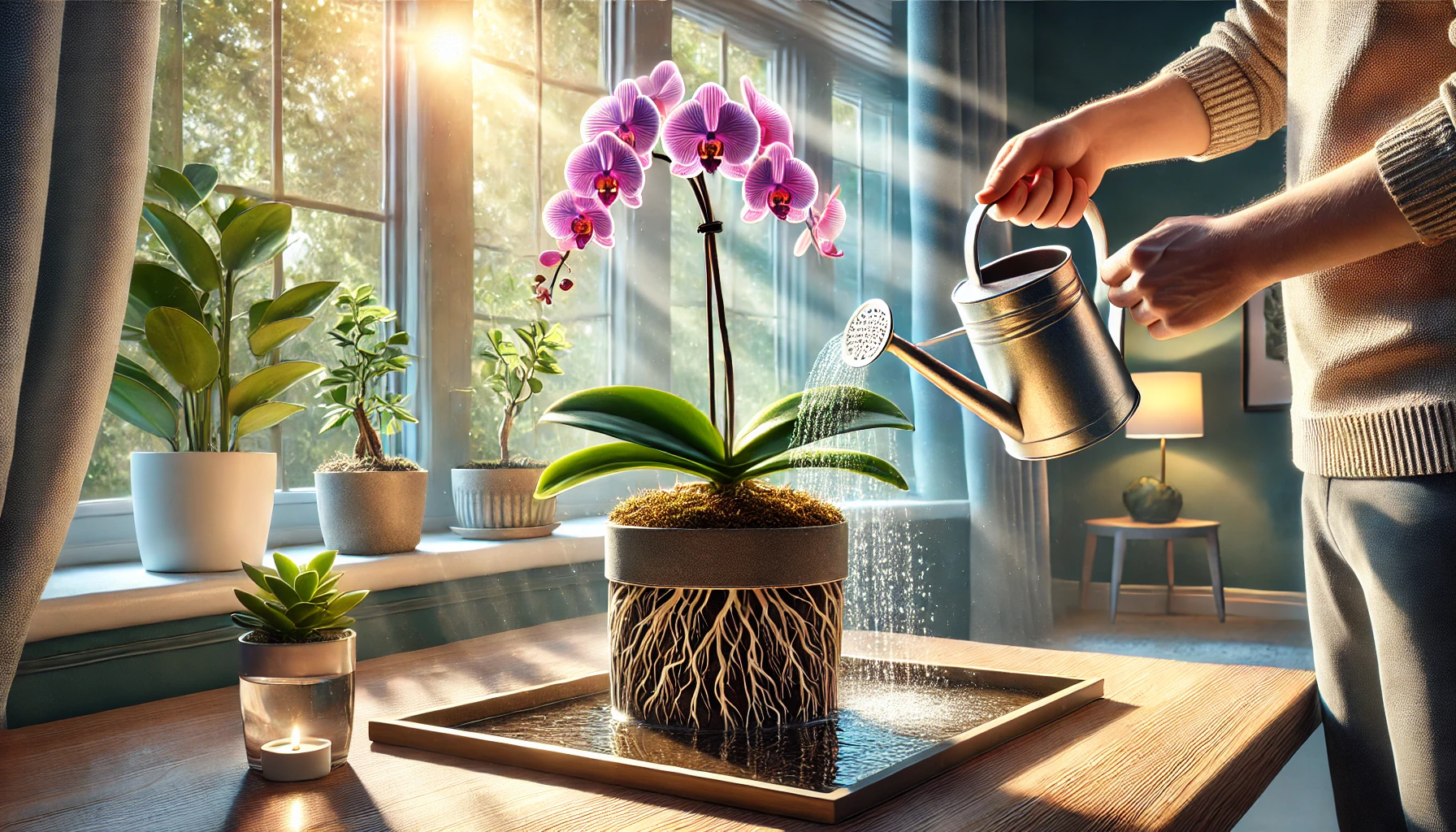Watering orchids can be tricky, especially for beginners. Too much water can lead to root rot, while too little can cause dehydration. So, how do you find the right balance?
In this guide, we’ll cover:
✅ How often to water orchids
✅ The best watering techniques
✅ Common mistakes to avoid
✅ Signs of overwatering and underwatering
Let’s dive in! 🌱
How Often Should You Water Orchids?
There is no universal watering schedule for orchids because factors like humidity, temperature, and potting medium affect how quickly they dry out. However, here’s a general guideline:
- Winter: Water once a week
- Summer: Water twice a week (if the air is dry)
- High humidity environments: Water less frequently
- Low humidity environments: Water more often
💡 Tip: Always check the moisture level before watering. Stick your finger into the potting medium or use a wooden skewer—if it comes out dry, it’s time to water.
Best Watering Techniques for Orchids
🌿 Method 1: Soaking (Best for Most Orchids)
- Place the orchid pot in a bowl or sink.
- Pour lukewarm water over the potting medium until water runs out of the drainage holes.
- Let it drain completely before putting it back in its place.
💦 Method 2: Ice Cube Watering (Not Recommended)
Some people suggest placing ice cubes on the potting medium to slowly release water. However, this is not ideal because orchids are tropical plants that are not adapted to cold temperatures. Instead, use room-temperature water.
🌿 Method 3: Bottom Watering (For Sensitive Roots)
- Fill a shallow tray with water and place the orchid pot inside.
- Allow the roots to soak up moisture for 5–10 minutes.
- Remove the pot and let it drain completely.
Signs You Are Overwatering Your Orchid
🚨 Overwatering is the #1 cause of orchid death. If you notice these signs, you might be giving your plant too much water:
❌ Yellow, mushy leaves
❌ Black or brown roots
❌ A foul smell from the roots
❌ Mold or fungus on the potting medium
How to Fix an Overwatered Orchid
- Remove the orchid from its pot.
- Trim off any rotten or black roots with sterilized scissors.
- Let the plant dry for a few hours before repotting in fresh, well-draining orchid mix.
- Reduce watering frequency and ensure proper drainage.
Signs You Are Underwatering Your Orchid
🚨 While less common, underwatering can also harm your orchid. Watch out for these signs:
❌ Wrinkled or limp leaves
❌ Dry, brittle roots
❌ Slow growth or no new leaves
How to Fix an Underwatered Orchid
- Soak the orchid’s roots in room-temperature water for 10–15 minutes.
- Increase watering frequency slightly, but don’t overcompensate.
- Check humidity levels—low humidity may require more frequent watering.
Final Tips for Watering Orchids
✅ Use rainwater or distilled water if possible (tap water with high chlorine can harm orchids).
✅ Always water in the morning to allow excess moisture to evaporate.
✅ Ensure your pot has good drainage holes to prevent standing water.
✅ Adjust watering based on seasonal changes—less in winter, more in summer.
By following these tips, you’ll keep your orchid healthy, hydrated, and thriving! 🌸
